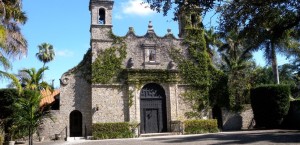Book a window seat on the starboard side for your next flight to Miami. As you land, you’ll see a tower, rising like Proteus from the sea, that looks like it took a wrong turn on the way to Cadiz. A preacher’s son built her, chose her as the centerpiece of the city he intended to carve into his acres of citrus grove and pine. If Manhattan was the new Amsterdam, or perhaps the new York, Coral Gables would be the new Venice and the new Barcelona, with miles of backyard waterways and winding boulevards, grand entrances and shady prados.
The city lost some of her original charm over the years as criminal and incompetent developers teamed with criminal and incompetent politicians to encourage the unspeakable. At one point, the Gables handed her beautiful beach to human refuse that built houses so monstrous they seem constantly toppling back into the sea. One can hope they take the architects with them.
But, though we have squandered much of her beauty, and still threaten more, she remains, like Venice, serenissima, a place of tranquil romance where lovers walk on old stone paths and kiss on old stone benches under old oak trees. Even the streetlights, fashioned after the Parisian gas lamps of la belle époque, are soft and warm.
Nights are tame in Coral Gables, especially by Miami standards: folk drive from West Palm Beach (that’s 80 miles, four times longer than the entire expanse of I-95 through Delaware) for a meal here, but the bars, even when bustling, are usually just places for locals to chat before walking to dinner.



